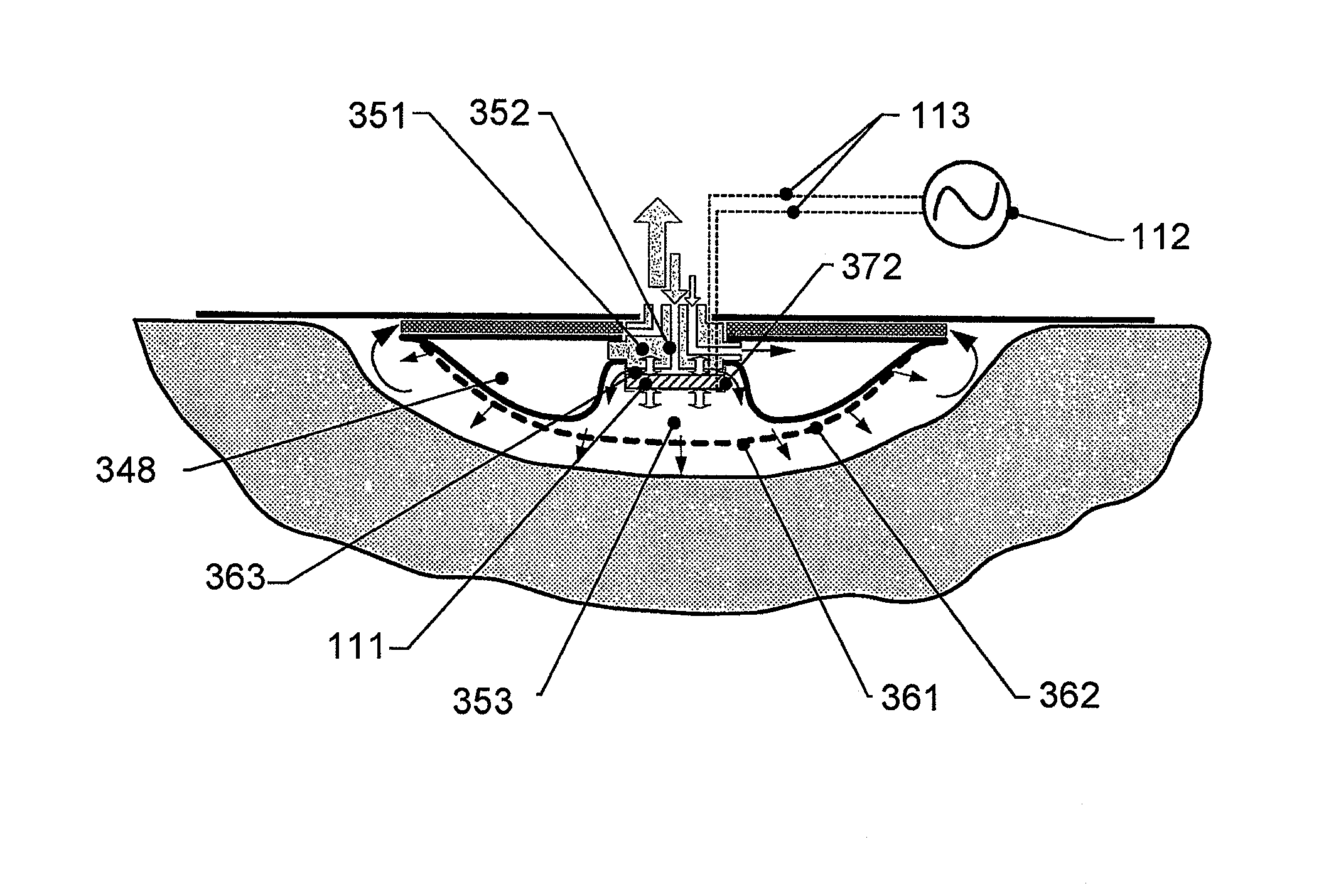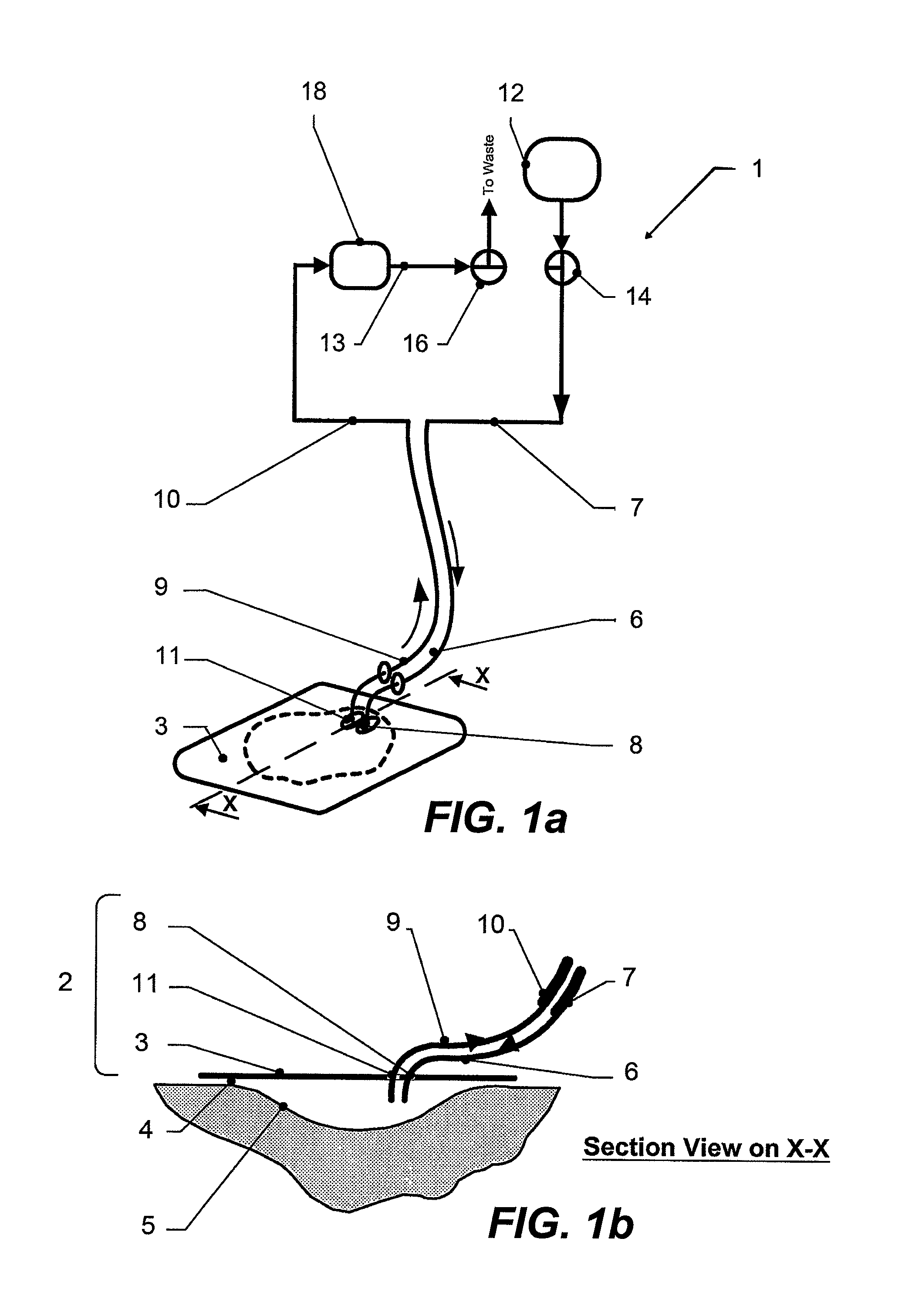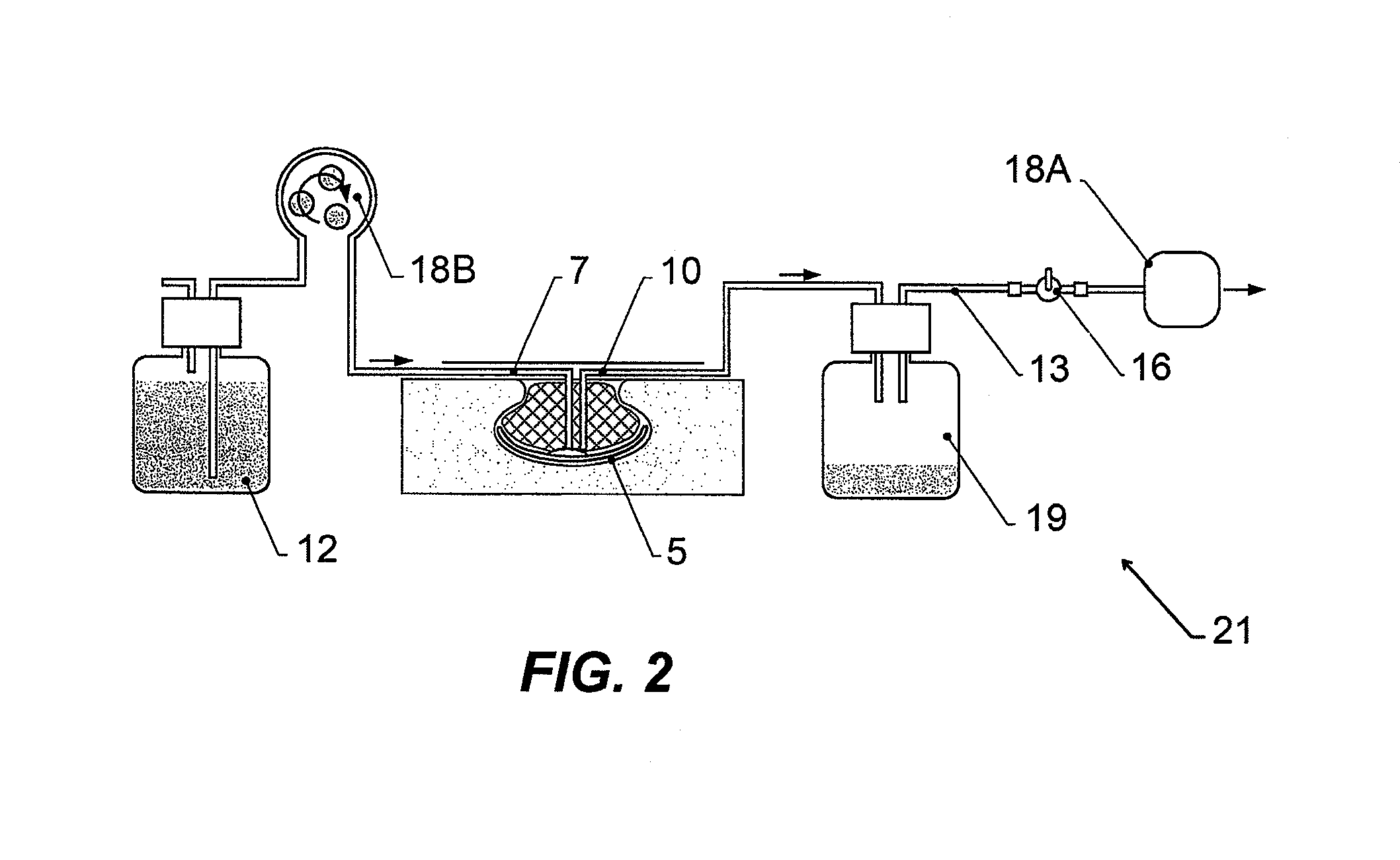Wound treatment apparatus and method
a wound treatment and apparatus technology, applied in the field of apparatus and wound treatment equipment, can solve the problems of relatively little beneficial materials involved in wound healing, cytokines, growth factors, cytokines, etc., and achieve the effect of convenient handling and better rigidity
- Summary
- Abstract
- Description
- Claims
- Application Information
AI Technical Summary
Benefits of technology
Problems solved by technology
Method used
Image
Examples
Embodiment Construction
[0420]Referring to FIGS. 1a and 1b, the apparatus (1) for aspirating, irrigating and / or cleansing wounds comprises a conformable wound dressing (2), having a backing layer (3) which is capable of forming a relatively fluid-tight seal or closure (4) over a wound (5) and one inlet pipe (6) for connection to a fluid supply tube (7), which passes through the wound-facing face of the backing layer (5) at (8), and one outlet pipe (9) for connection to a fluid offtake tube (10), which passes through the wound-facing face at (11), the points (8), (11) at which the inlet pipe and the outlet pipe passes through and / or under the wound-facing face forming a relatively fluid-tight seal or closure over the wound; the inlet pipe being connected via means for supply flow regulation, here a valve (14), by the fluid supply tube (7) to a fluid reservoir (12), and the outlet pipe (9) being connected via means for aspirate flow regulation, here a valve (16) and a fluid offtake tube (10) to waste, e.g. t...
PUM
 Login to View More
Login to View More Abstract
Description
Claims
Application Information
 Login to View More
Login to View More - R&D
- Intellectual Property
- Life Sciences
- Materials
- Tech Scout
- Unparalleled Data Quality
- Higher Quality Content
- 60% Fewer Hallucinations
Browse by: Latest US Patents, China's latest patents, Technical Efficacy Thesaurus, Application Domain, Technology Topic, Popular Technical Reports.
© 2025 PatSnap. All rights reserved.Legal|Privacy policy|Modern Slavery Act Transparency Statement|Sitemap|About US| Contact US: help@patsnap.com



